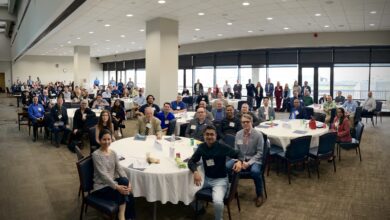
It is with pleasure that we welcome Jacob Morgan, an authority on leadership, the future of work, and employee experience, as our latest guest contributor. Authoring bestsellers and providing invaluable insights to the corporate behemoths like Microsoft, Disney, PwC, PepsiCo, MasterCard, IBM, to name a few, Morgan has been instrumental in shaping many modern workplaces. His latest book, “Leading With Vulnerability,” launched this month, delivers an unprecedented exploration into the world of leadership and its nuances. In an intense research process, Morgan has personally interviewed more than 100 CEOs and surveyed 14,000 employees to decode why vulnerability in leadership differs significantly from that experienced by the rest, and how leaders should approach vulnerability in the right way to create trust, unlock the potential of those around them, and lead through change. In today’s article, he offers us an exclusive sneak peek into his crucial findings.
Let’s time-travel back to 20 August 1991, a day that had Continental Airlines employees sweating in their seats. Their CEO, Hollis Harris, sent a memo that was akin to a desperate cry for help. It went something like this, “Folks, our company is in trouble and we are in a constant battle with internal and external forces, pray for the future of Continental Airlines.” The next day he was fired.
This story was told to me by Doug Parker, the former Chairman and CEO of American Airlines. He pointed out that what Hollis did was indeed vulnerable, but where was the leadership?
Now imagine if Hollis was just another employee crunching numbers in accounting. His words would’ve probably earned him a few sympathetic nods, a lunch invitation, or some encouraging words from his boss. No biggie, right?
However, the ripple effect of words and actions expands exponentially when one is in a position of leadership. It has the power to instill courage or breed apprehension, strengthen trust or crumble it to dust. Hollis’s request for prayers inadvertently sowed seeds of chaos, fear and destroyed the trust that underpinned his credibility.
Doug Parker had to deal with tough times as well, like going in front of Congress to ask for money to keep his company afloat during the pandemic. Often, he found himself in the parking lot, psyching himself up before marching into the office, consciously trying to tone down his vulnerability for the sake of the company morale. He once told me, “The last thing we need is for anyone to think we’re in trouble. With the pandemic, everyone thought the airline industry was going down the tubes. I couldn’t let my team believe that because I didn’t. Acting panicked and emotional would’ve been the worst move. Being vulnerable is one thing, but leadership must come first. No leader should ever scare their team.”
During the pandemic, plenty of CEOs had to deal with difficult situations and address their employees, but they had to do so in a different way. One such CEO is Fleetwood Grobler from Sasol Limited, a South African energy and chemical company. He took over when the company was up to its neck in a staggering $13 billion in debt.
He’d just finished a project in Lake Charles, Louisiana, when he was told he had to be CEO and present the financial results for the first time ever. To add to this, the pandemic hit, pushing the company to the brink of a takeover by the banks. In his first town hall meeting, Fleetwood told his employees he didn’t have all the answers but he had a vision of where he wanted to go, and that he knew he had a stellar team and was confident they could turn things around together. He invited his employees to join him in this vision of rebuilding trust with employees and customers while helping him figure out the best path forward.
This stark contrast between the messages from Harris and Grobler serves as an invaluable lesson. Where Harris laid bare his vulnerability, Grobler chose to lead with vulnerability. Vulnerability is the act of revealing emotional weakness, while leading with vulnerability couples this exposure with actionable steps towards a positive outcome.
Leaders, therefore, face the challenge of merging vulnerability with leadership, intertwining competence with connection. Showing up at work and confessing to a mistake equates to vulnerability. However, acknowledging that mistake, sharing the lessons learned, and articulating a plan to avoid future repetition — that’s leading with vulnerability.
Leaders need to combine leadership with vulnerability — competence with connection — in order to be able to create trust, unlock the potential of others, lead through change, and drive business performance.
By 2030 we are going to have between 90 million and 440 million leaders around the world. If we take a number in the middle of these two, that’s 265 million leaders. These are people who are responsible for the lives of others, for shaping culture and society, creating jobs, speaking up for injustices, and fighting for social causes. True change comes from true leadership, the leaders who embrace vulnerability are the ones who can change the world and guide us to a better future. We cannot create organizational and global change if we don’t have the right people to lead us in making that change happen.
Leaders should not be vulnerable, they should instead lead with vulnerability.
 Jacob Morgan is a five-time best-selling author, futurist, and keynote speaker on leadership, employee experience, and the future of work.
Jacob Morgan is a five-time best-selling author, futurist, and keynote speaker on leadership, employee experience, and the future of work.






